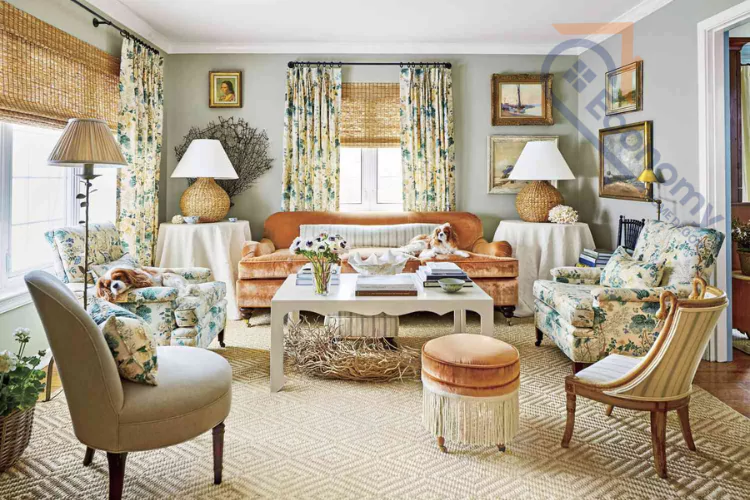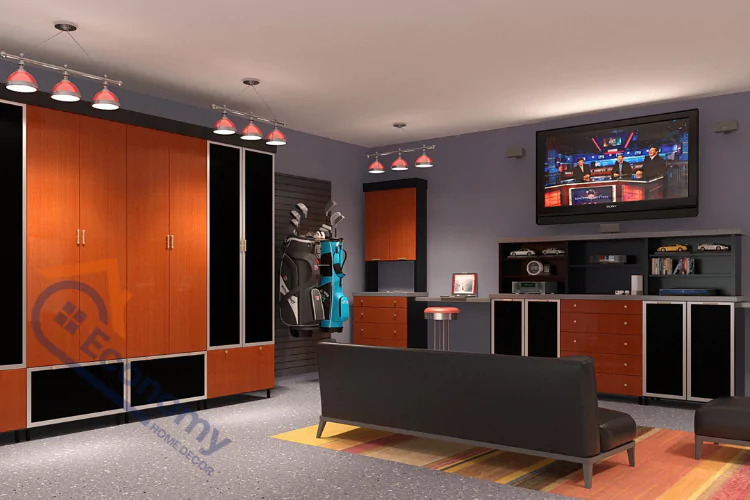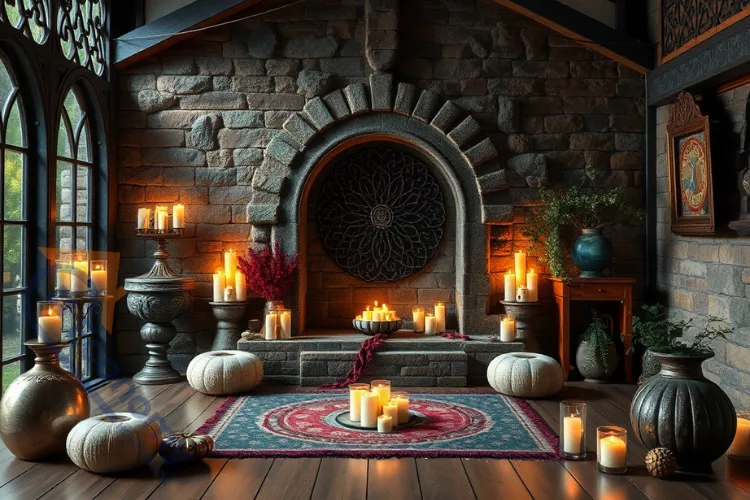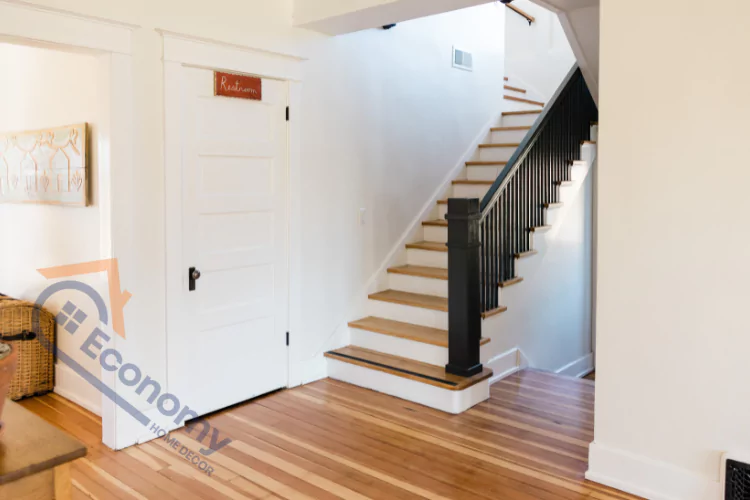Your living hall is the heart of your home, where family gatherings happen and memories are made. The right lighting can transform this space from ordinary to extraordinary, creating an atmosphere that’s both functional and beautiful. Whether you’re entertaining guests or enjoying a quiet evening at home, proper lighting sets the mood and enhances the overall ambiance of your living area.
Good lighting doesn’t just illuminate your space – it creates depth, highlights architectural features, and makes your room feel more spacious and welcoming. From ambient lighting that provides general illumination to accent lighting that showcases your favorite artwork, each type of lighting serves a specific purpose in creating a well-balanced and inviting environment.
Understanding the Basics of Living Hall Lighting
Before diving into specific living hall lighting ideas, it’s important to understand the three main types of lighting that work together to create a perfectly lit space. Ambient lighting provides overall illumination for the room, task lighting focuses on specific activities like reading or working, and accent lighting highlights particular features or creates visual interest.
The key to successful living hall lighting is layering these different types of lighting throughout your space. This approach gives you flexibility to adjust the mood and functionality of your room based on different occasions and times of day. When planning your lighting scheme, consider the natural light that enters your room, the size and layout of your space, and how you primarily use the area.
Most living halls benefit from having multiple light sources at different heights and intensities. This creates a dynamic lighting environment that can be adjusted for various activities, from hosting dinner parties to watching movies with the family. The goal is to eliminate harsh shadows while providing adequate illumination for all your daily activities.
Choosing the Right Ceiling Fixtures
Ceiling fixtures serve as the foundation of your living hall lighting scheme, providing the primary source of ambient light for the entire space. When selecting ceiling fixtures, consider both the height of your ceiling and the overall size of your room. Chandeliers work beautifully in rooms with high ceilings, while flush-mount or semi-flush fixtures are better suited for standard ceiling heights.
For larger living halls, consider installing multiple ceiling fixtures to ensure even light distribution throughout the space. Recessed lighting is an excellent choice for modern homes, as it provides clean, unobtrusive illumination without taking up visual space. You can use dimmer switches with recessed lights to adjust the brightness level based on the time of day or activity.
Pendant lights offer another stylish option for living hall lighting ideas, especially when hung at varying heights to create visual interest. These fixtures work particularly well over seating areas or to define specific zones within an open-concept living space. When choosing pendant lights, make sure they’re proportional to your room size and furniture scale.
| Ceiling Fixture Type | Best For | Ceiling Height | Room Size |
|---|---|---|---|
| Chandelier | Traditional/Formal | 9+ feet | Large rooms |
| Flush Mount | Modern/Casual | 8-9 feet | Medium rooms |
| Recessed Lights | Contemporary | Any height | All sizes |
| Pendant Lights | Accent/Zone | 8+ feet | Variable |
Creating Ambiance with Table and Floor Lamps
Table and floor lamps are essential components of any comprehensive living hall lighting ideas plan, providing both functional task lighting and decorative elements that enhance your room’s style. These portable lighting solutions offer flexibility in positioning and can be easily moved or replaced as your decorating needs change over time.
Floor lamps are particularly effective for providing ambient lighting in corners or beside seating areas where overhead lighting might not reach adequately. Torchiere floor lamps direct light upward, bouncing it off the ceiling to create soft, diffused illumination throughout the room. Reading lamps with adjustable arms are perfect for positioning next to your favorite chair or sofa.
Table lamps add warmth and personality to your living space while providing localized lighting for specific activities. Place them on side tables, console tables, or shelving units to create pools of light that make your room feel more intimate and welcoming. When selecting table lamps, consider the proportion relative to your furniture and choose shades that complement your existing color scheme.
For maximum impact, use lamps in pairs or groups of odd numbers, and vary the heights to create visual interest. The general rule is that the bottom of the lampshade should be at eye level when you’re seated nearby, ensuring comfortable lighting for reading or other activities.
Accent Lighting to Highlight Features
Accent lighting is what transforms a well-lit room into a truly spectacular space by drawing attention to architectural features, artwork, and decorative elements. This type of lighting typically uses about three times more light than ambient lighting to create dramatic contrast and visual interest throughout your living hall.
Wall sconces are excellent accent lighting solutions that can highlight artwork, create uplighting effects, or provide gentle illumination along hallways and walkways. Picture lights mounted directly above artwork ensure your favorite pieces are properly illuminated and become focal points in your room design.
Track lighting systems offer incredible flexibility for accent lighting, allowing you to direct light exactly where you want it. These systems are particularly effective for highlighting multiple pieces of artwork or creating dramatic lighting effects on textured walls or architectural features. LED track lights are energy-efficient and produce minimal heat, making them ideal for long-term use.
Don’t overlook the power of uplighting to create dramatic effects in your living hall. Floor-mounted uplights can wash walls with soft light, making your room appear larger and more spacious. Strip lighting hidden behind architectural elements or furniture can create subtle accent lighting that adds depth and dimension to your space.
Smart Lighting Solutions for Modern Living
Smart lighting technology has revolutionized how we approach living hall lighting ideas, offering unprecedented control over the ambiance and functionality of our spaces. These systems allow you to adjust brightness, color temperature, and even color itself using smartphone apps or voice commands, making it easier than ever to create the perfect lighting for any occasion.
Smart bulbs can be installed in existing fixtures, instantly upgrading your lighting capabilities without requiring new wiring or fixtures. Many smart bulbs offer tunable white light, allowing you to adjust from warm, cozy tones in the evening to bright, energizing light during the day. This helps support your natural circadian rhythm and can improve your overall well-being.
Smart lighting systems can be programmed to automatically adjust throughout the day, gradually dimming as evening approaches or brightening when you wake up. You can create preset scenes for different activities like “movie night,” “dinner party,” or “reading time,” each with its own unique lighting configuration that can be activated with a single command.
Motion sensors and daylight sensors can be integrated into smart lighting systems to automatically adjust your living hall lighting based on occupancy and natural light levels. This not only adds convenience but also helps reduce energy consumption by ensuring lights are only on when needed.
Incorporating Natural Light Elements
While artificial lighting is crucial for living hall lighting ideas, maximizing natural light should be a priority in your overall lighting strategy. Natural light not only reduces energy costs but also provides the most flattering and healthy illumination for your living space throughout the day.
Window treatments play a crucial role in controlling natural light while maintaining privacy and style. Sheer curtains or light-filtering blinds allow natural light to enter while softening harsh direct sunlight. Layered window treatments give you maximum flexibility, allowing you to adjust light levels throughout the day based on your needs and preferences.
Mirrors are powerful tools for amplifying natural light in your living hall. Strategically placed mirrors can reflect natural light from windows deeper into your room, making the space feel brighter and more spacious. Large mirrors opposite windows are particularly effective at doubling the impact of natural light in your living area.
Consider installing skylights or larger windows if your home’s structure allows, as these architectural changes can dramatically improve the natural lighting in your living hall. Light tubes or solar tubes are less expensive alternatives that can bring natural light into interior spaces without major structural modifications.
Seasonal Lighting Adjustments
Your living hall lighting needs change with the seasons, and adapting your lighting scheme accordingly can help maintain comfort and energy efficiency throughout the year. During longer summer days, you might rely more on natural light and use artificial lighting primarily for evening activities and accent purposes.
Winter months require more artificial lighting to compensate for shorter days and reduced natural light. This is when your layered lighting approach becomes especially important, as you’ll need to create warmth and brightness to counteract the seasonal blues. Warm-toned bulbs (2700K-3000K) are particularly effective during winter months.
Consider rotating decorative lighting elements seasonally to keep your living hall feeling fresh and current. String lights or lanterns might work well for summer entertaining, while candles and fireplaces create cozy winter ambiance. These seasonal changes don’t require major investments but can significantly impact the feel of your space.
Holiday lighting can be incorporated into your overall living hall lighting ideas without overwhelming your regular design scheme. Use timers and dimmers to integrate holiday lights seamlessly with your existing lighting, creating festive atmospheres that enhance rather than compete with your permanent lighting fixtures.
Energy-Efficient Lighting Options
Modern living hall lighting ideas increasingly focus on energy efficiency, both for environmental responsibility and cost savings. LED bulbs have become the gold standard for residential lighting, offering significant energy savings, longer lifespans, and improved light quality compared to traditional incandescent bulbs.
LED technology has advanced dramatically in recent years, with options now available in virtually any color temperature and brightness level you might need. Many LED bulbs are dimmable, allowing you to adjust light levels for different activities and moods. While the initial cost of LED bulbs is higher than traditional bulbs, the long-term savings in energy costs and replacement frequency make them an excellent investment.
Solar-powered lighting options are becoming increasingly viable for certain applications, particularly outdoor living spaces that extend your living hall concept. Solar path lights, string lights, and accent lights can illuminate outdoor entertaining areas without adding to your electricity bill.
Consider installing occupancy sensors or daylight sensors to automatically control your living hall lighting based on use patterns and natural light availability. These systems can significantly reduce energy consumption by ensuring lights are only on when needed and adjusting brightness based on available natural light.
Lighting for Different Activities
A well-designed living hall lighting scheme accommodates various activities that take place in this multi-functional space. Entertainment areas need different lighting than reading nooks, and your lighting plan should be flexible enough to support all these different uses effectively.
For television viewing, avoid placing lights where they’ll create glare on the screen. Instead, use soft ambient lighting behind the seating area or along the walls to provide enough illumination for safety while not competing with the screen. Bias lighting behind the TV itself can reduce eye strain during extended viewing sessions.
Reading areas require focused task lighting that provides adequate illumination without creating shadows on the page. Adjustable floor lamps or table lamps positioned to one side of seating areas work best for reading activities. The light should be bright enough to read comfortably but not so bright that it creates harsh contrasts with the surrounding area.
Conversation areas benefit from warm, inviting lighting that creates intimacy and encourages social interaction. Multiple light sources at different heights help eliminate harsh shadows on faces while creating a welcoming atmosphere for guests.
Budget-Friendly Living Hall Lighting Ideas
Creating beautiful living hall lighting doesn’t have to break the bank. Many effective lighting solutions are surprisingly affordable, and with some creativity, you can achieve professional-looking results on a modest budget. DIY projects can add personal touches while saving money on expensive custom fixtures.
String lights aren’t just for holidays – they can create magical ambient lighting year-round when used creatively. Drape them behind sheer curtains, wrap them around architectural elements, or create light curtains to divide spaces in open-concept living areas. Battery-operated LED string lights eliminate the need for outlets and can be easily repositioned as needed.
Thrift stores and garage sales are excellent sources for unique lighting fixtures that can be updated with new shades, bulbs, or paint. A dated chandelier can become a stunning focal point with the right restoration work, and vintage lamps often have character that new fixtures lack.
Simple lamp shade changes can dramatically alter the look and light quality of existing fixtures. Changing from a dark shade to a light one will increase light output, while colored or patterned shades can add visual interest and complement your décor scheme without requiring new fixtures.
Common Lighting Mistakes to Avoid
Even well-intentioned living hall lighting ideas can go wrong if common mistakes aren’t avoided. Over-lighting is a frequent problem where too many light sources or overly bright bulbs create an uncomfortable, harsh environment that feels more like a commercial space than a cozy living area.
Placing all your light sources at the same height creates flat, uninteresting lighting that doesn’t enhance your room’s architecture or furnishings. Varying the heights of your light sources creates depth and visual interest while providing more effective illumination for different activities.
Ignoring the color temperature of your bulbs can result in an uncomfortable mix of warm and cool light that feels disjointed and uninviting. Stick to consistent color temperatures within each room, or use the variation intentionally to create distinct zones within your living space.
Forgetting to include dimmer switches limits your ability to adjust lighting for different occasions and times of day. Dimmers are relatively inexpensive to install and provide tremendous flexibility in creating the right ambiance for any situation.
Key Takeaways
Creating the perfect living hall lighting requires thoughtful planning and a layered approach that combines ambient, task, and accent lighting. Here are the essential points to remember:
- Layer your lighting with multiple sources at different heights to create depth and flexibility
- Include dimmer switches on all major light sources for maximum control over ambiance
- Balance natural and artificial light to create the most comfortable and energy-efficient environment
- Consider your room’s specific needs based on size, ceiling height, and primary activities
- Invest in quality LED bulbs for long-term energy savings and better light quality
- Don’t forget maintenance – clean fixtures and replace bulbs promptly to maintain optimal lighting
- Plan for seasonal changes in lighting needs and natural light availability
Conclusion
The right living hall lighting ideas can completely transform your space from ordinary to extraordinary, creating an environment that’s both functional and beautiful. By understanding the different types of lighting and how they work together, you can create a layered lighting scheme that adapts to your various needs throughout the day and seasons.
Remember that great lighting is about more than just illumination – it’s about creating atmosphere, enhancing your home’s architectural features, and supporting the activities that happen in your living space. Whether you’re working with a generous budget or looking for affordable solutions, there are lighting options available that can help you achieve the perfect ambiance for your living hall.
Take time to evaluate your current lighting situation and identify areas for improvement. Start with the basics of ambient lighting, then add task and accent lighting as needed. With careful planning and attention to detail, your living hall can become the welcoming, well-lit heart of your home that you’ve always envisioned.
Frequently Asked Questions
Q: How many light sources should I have in my living hall?
A: The number depends on your room size, but generally, you should have one ambient light source per 100 square feet, plus additional task and accent lighting as needed. A typical living hall might have 4-6 different light sources when properly layered.
Q: What’s the best color temperature for living hall lighting?
A: Warm white (2700K-3000K) is generally best for living areas as it creates a cozy, inviting atmosphere. You can use slightly cooler temperatures (3500K-4000K) for task lighting if needed.
Q: Should all my light bulbs be the same brightness?
A: No, varying brightness levels creates more interesting and functional lighting. Use brighter bulbs for ambient lighting and dimmer ones for accent lighting to create proper contrast and depth.
Q: How high should I hang pendant lights in my living hall?
A: Pendant lights should typically hang 12-18 inches below an 8-foot ceiling, or about 7 feet above the floor. Adjust based on your ceiling height and the specific location of the fixture.
Q: Can I mix different types of light fixtures in one room?
A: Yes, mixing fixture types adds visual interest and provides better lighting functionality. Just ensure they complement each other in style and finish for a cohesive look.
Q: What’s the most important lighting mistake to avoid?
A: The biggest mistake is relying on a single overhead light source. This creates harsh shadows and doesn’t provide adequate illumination for all activities. Always use multiple light sources at different heights.







